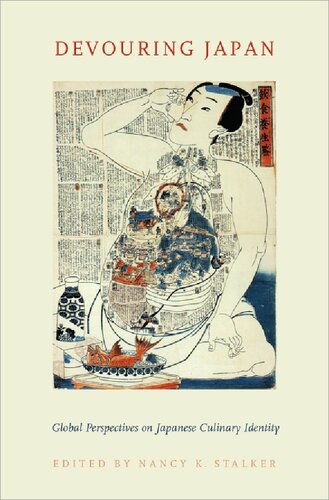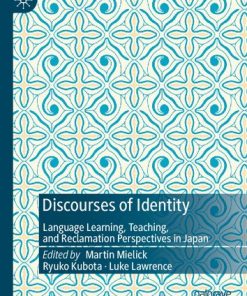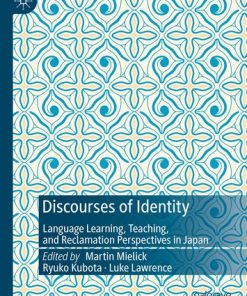Devouring Japan: Global Perspectives on Japanese Culinary Identity Nancy K. Stalker
$50.00 Original price was: $50.00.$25.00Current price is: $25.00.
Devouring Japan: Global Perspectives on Japanese Culinary Identity Nancy K. Stalker – Ebook Instant Download/Delivery ISBN(s): 9780190240400,9780190240417,9780190240424,0190240407,0190240415,0190240423,9780190240431, 0190240431

Product details:
- ISBN 10: 0190240431
- ISBN 13: 9780190240431
- Author: Nancy K. Stalker
In recent years Japan’s cuisine, or washoku, has been eclipsing that of France as the world’s most desirable food. UNESCO recognized washoku as an intangible cultural treasure in 2013 and Tokyo boasts more Michelin-starred restaurants than Paris and New York combined. International enthusiasm for Japanese food is not limited to haute cuisine; it also encompasses comfort foods like ramen, which has reached cult status in the U.S. and many world capitals. Together with anime, pop music, fashion, and cute goods, cuisine is part of the “Cool Japan” brand that promotes the country as a new kind of cultural superpower.
This collection of essays offers original insights into many different aspects of Japanese culinary history and practice, from the evolution and characteristics of particular foodstuffs to their representation in literature and film, to the role of foods in individual, regional, and national identity. It features contributions by both noted Japan specialists and experts in food history.
The authors collectively pose the question “what is washoku?” What culinary values are imposed or implied by this term? Which elements of Japanese cuisine are most visible in the global gourmet landscape and why? Essays from a variety of disciplinary perspectives interrogate how foodways have come to represent aspects of a “unique” Japanese identity and are infused with official and unofficial ideologies. They reveal how Japanese culinary values and choices, past and present, reflect beliefs about gender, class, and race; how they are represented in mass media; and how they are interpreted by state and non-state actors, at home and abroad. They examine the thoughts, actions, and motives of those who produce, consume, promote, and represent Japanese foods.
Table content:
1. Japanese Food in the Early Modern European Imagination
2. Gifting Melons to the Shining Prince: Food in the Late Heian Court Imagination
3. Soba, Edo Style: Food, Aesthetics, and Cultural Identity
4. The Three Waves (and Ways) of Sake Appreciation in the West
Culinary Nationalism and Branding
5. Washoku, Far and Near: UNESCO, Gastrodiplomacy, and the Cultural Politics of Traditional Japanese Cuisine
6. “We Can Taste but Others Cannot”: Umami as an Exclusively Japanese Concept
7. Rosanjin: The Roots of Japanese Gourmet Nationalism
Regional and International Variations
8. Savoring the Kyoto Brand
9. Love! Spam: Food, Military, and Empire in Post–World War II Okinawa
10. Nikkei Cuisine: How Japanese Food Travels and Adapts Abroad
Part II. Japan’s Food-Related Values
Food and Individual Identity
11. Miso Mama: How Meals Make the Mother in Contemporary Japan
12. Better Than Sex? Masaoka Shiki’s Poems on Food
13. The Devouring Empire: Food and Memory in Hayashi Fumiko’s Wartime Narratives and Naruse Mikio’s Films
Food Anxieties
14. Eating amid Affluence: Kaikō Takeshi’s Adventures in Food
15. An Anorexic in Miyazaki’s Land of Cockaigne: Excess and Abnegation in Spirited Away
16. Discarding Cultures: Social Critiques of Food Waste in an Affluent Japan
17. The Unbearable, Endless Anxiety of Eating: Food Consumptio
People also search:
does devouring vegetoid count
can shinto eat mea
are japanese demons real
are japanese gods immortal
can japan defeat russia
You may also like…
Politics & Philosophy
Cross-Disciplinary Perspectives on Regional and Global Security 1st Edition
Politics & Philosophy
Global Perspectives on Stem Cell Technologies 1st Edition Aditya Bharadwaj 9783319637877 3319637878
Politics & Philosophy - Social Sciences
Linguistics - Sociolinguistics
Arts - Music
Politics & Philosophy - European & American Philosophy
Perspectives on the Philosophy of David K. Lewis by Helen Beebee












